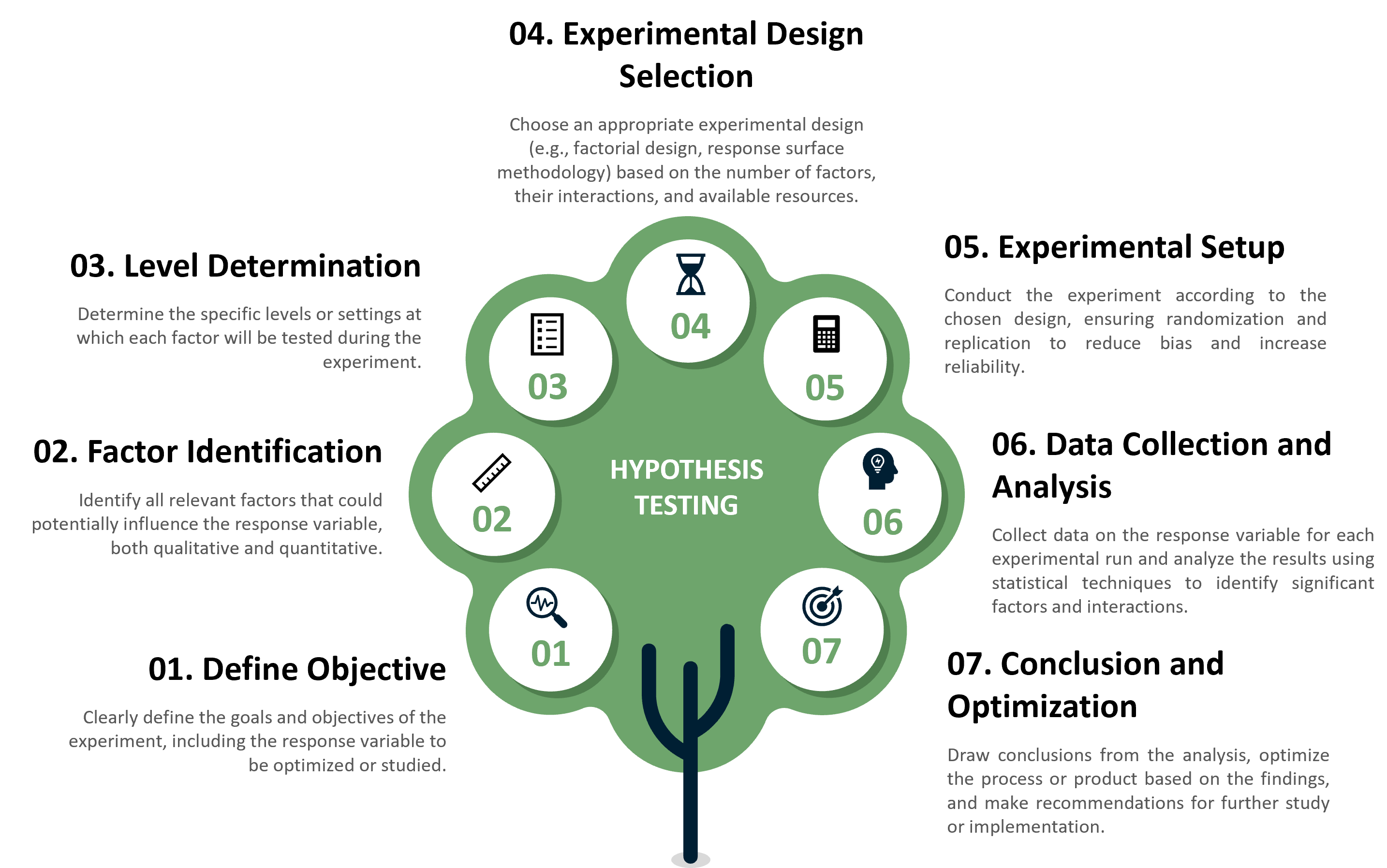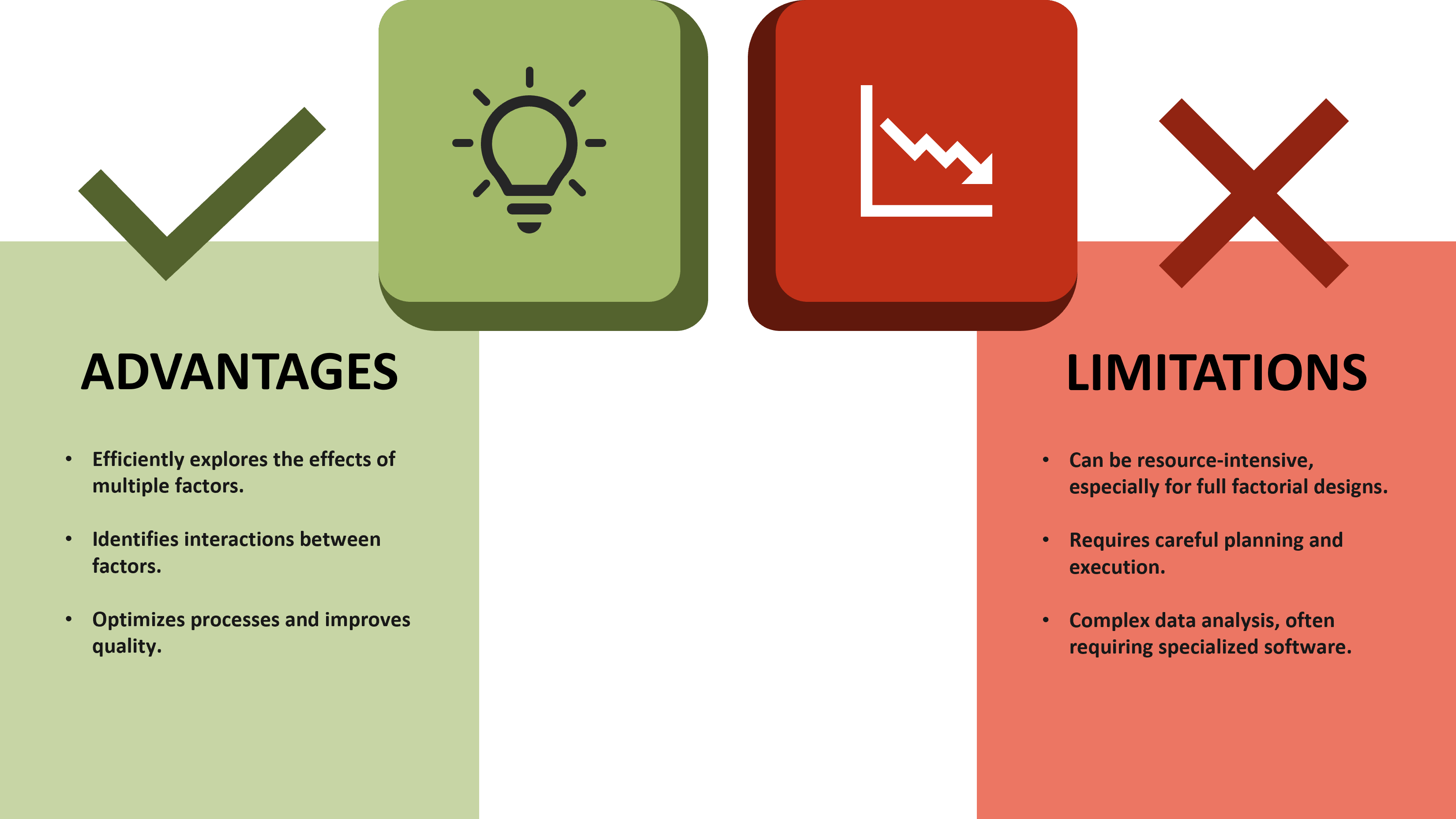WHAT IS DESIGN OF EXPERIMENTS?
Design of Experiments (DOE) is a structured, organized method for determining the relationship between factors affecting a process and the output of that process. It helps in systematically conducting tests to understand which factors have significant effects and how these factors interact.
KEY DOE CONCEPTS
Factors and Levels
These aspects enable the exploration of impact on the response variable.
Factors: Variables that are controlled or manipulated during the experiment to observe their effect on the response variable. Examples include temperature, pressure, and concentration.
Levels: Values or settings of the factors. For example, if temperature is a factor, the levels might be 100°C, 150°C, and 200°C.
Responses
Response Variables: Outcomes or measurements that are observed in the experiment. These are the variables that are affected by the factors.
Interactions
Interactions: Occur when the effect of one factor depends on the level of another factor. DOE can help identify and quantify these interactions.
Steps in Conducting Design of Experiments (DOE)

TYPES OF DOE
Full Factorial Design
– Tests all possible combinations of factors and levels.
– Provides comprehensive data about interactions between factors.
– However, due to its exhaustive nature, it often requires a large number of experiments to be conducted.
Fractional Factorial Design
– Tests a subset of the possible combinations.
– Reduces the number of experiments needed.
– Useful when resources are limited.
Response Surface Methodology (RSM)
– Used to model and analyze problems in which a response is influenced by several variables.
– Also helps in optimizing the response variable.
Taguchi Methods
– Focuses on robust design by identifying the best combination of factors to minimize variability and improve quality.
– Additionally uses orthogonal arrays to systematically explores the parameter space, providing structured insights into the experimental domain.
MPORTANCE OF DOE
Efficient Exploration: allows researchers to efficiently explore the effects of multiple factors on a response variable. By systematically varying these factors at different levels, DOE helps in uncovering the most influential factors and their optimal settings.
Insightful Analysis: provides deep insights into the complex interactions between factors and their impact on the response variable. This understanding enables researchers to make informed decisions and fine-tune processes for improved performance.
Robust Optimization: facilitates robust optimization by systematically optimizing processes and products to meet desired specifications and performance targets. By considering multiple factors simultaneously, DOE helps in achieving optimal results that are robust to variations in operating conditions.
APPLICATIONS OF TESTING
Manufacturing: aims to optimize production processes and enhance product quality
Pharmaceuticals: services drug formulation and process optimization purposes
Agriculture: employs DOE to study variable impacts on crop yield.
Engineering: relies on DOE for designing robust systems and components.
PRO vs CON
